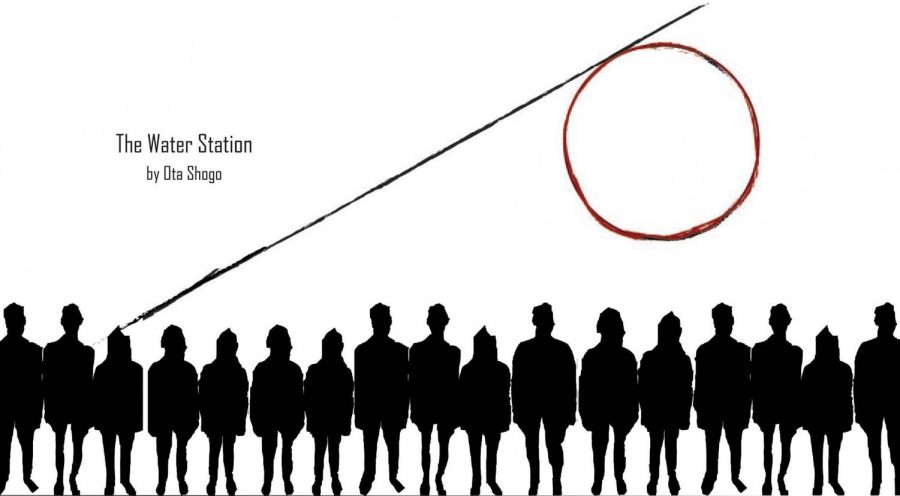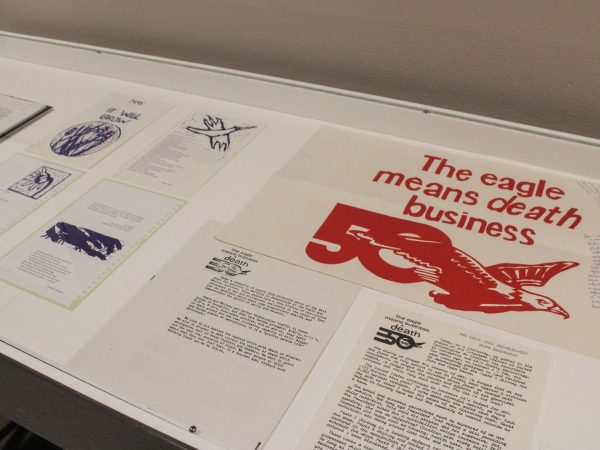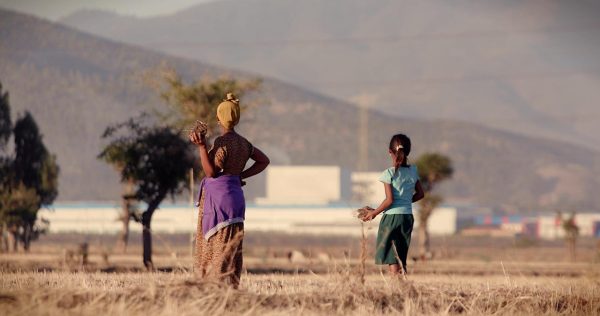“The Water Station”, creating your own story
UMass Amherst Theater presents a play without words
AMHERST–The University of Massachusetts Amherst Theater Department performed “The Water Station,” a silent play created by Japanese playwright Ōta Shōgo, on campus from Feb. 27 to March 7. The play portrays a series of travelers visiting a water fountain, where the audience bears witness to multiple scenarios in which nameless characters experience a plethora of emotions. Not a single word is exchanged during the performance, so each scenario is open to audience interpretation. However, despite the lack of dialogue, a silent play is never truly silent; a pianist accompanied the movement, including various musical pieces to enhance the emotion of certain scenes.
I attended the performance on March 4 and was absolutely entranced by the production. During the play, each traveler approaching the water station would walk out in slow motion, delicately placing their feet on the stage, footsteps silent with only the sound of the water trickling. Some actors walked out alone, stepping into beams of spotlight, while couples or large groups of people came out together. Each time a new actor presented themselves to the water station, a different scenario than the previous one would follow. Characters would come and drink from the fountain, dance along the stage and bathe within the water among other actions. With no words exchanged, each actor portrayed their emotions through movement and facial expressions. Abstract sculptures would continuously descend upon the stage, creating an intriguing background 0f all different shapes and materials.

Despite enjoying the tranquility and beauty of the performance, I left the theatre with a lot of curiosity. What was the story behind each traveler? Why were they at the water station? What was the significance of the sculptures in the background? An interview with the director soon clarified my questions.
Director Vishnupad Barve explained that there is not a specific story or message behind the play, but rather the point of the play is to “tell human stories as human species to other human species, and invite the audience to write their own stories.”
When asked if he noticed any differences in directing a silent play, versus a typical play with dialogue, Barve responded “We emphasized more on visual score, as well as abstract score, which was an abstract sound score created through piano and the water. I feel there was less stress in terms of continuously finding interpretation of everything, it was more about expression than interpretation.”
Barve’s choice of The Water Station stemmed from never seeing it before; “I’ve heard of this play while referring to the kind of work I’m interested in. I am majorly interested in the physicality of theatre-making, where all the different elements have an equal role to play.” To further explain, Barve added; “For example, in ‘The Water Station,’ if you just see the duration of sculptures, they are telling their own stories, or you can just come and listen to the music, the piano being played.” Each element of the production plays a part, therefore what Barve was trying to do was to “show how we can have three different elements at equal level [acting, music, and visuals] and put them together in space and time, and even the audience who are viewers will make their own stories.”
The stories each audience member creates is the very goal of this production. With the use of no words, all language barriers are broken, and people of all cultures can interpret the performance in their own way. Barve explained the significance of the lack of language through his own cultural experiences. “Being Indian, we have our own forty languages, so when we do a play we choose one language, and I realized that whenever I’m choosing one language, I’m missing a few audiences.” However, with no language included, all cultures are able to experience this specific performance.
Once you see this play you have contributed to the art of story-making, by actively interpreting what is on stage and creating a new story. Barve’s goal for the performance was for the audience to participate, “ I want, if there are a hundred audience members in the auditorium, to have 100 different stories to come out when they exit the auditorium. In fact, I consider the audience from day one of production. I know the story is not complete, because the audience is going to make the story complete.” The story I construed was different than any other person who has seen “The Water Station”, and I find that to be one of the most interesting and unique elements out of any performance that I have ever seen.
Email Caroline at [email protected] and follow her on Twitter @Carolinejb2001






